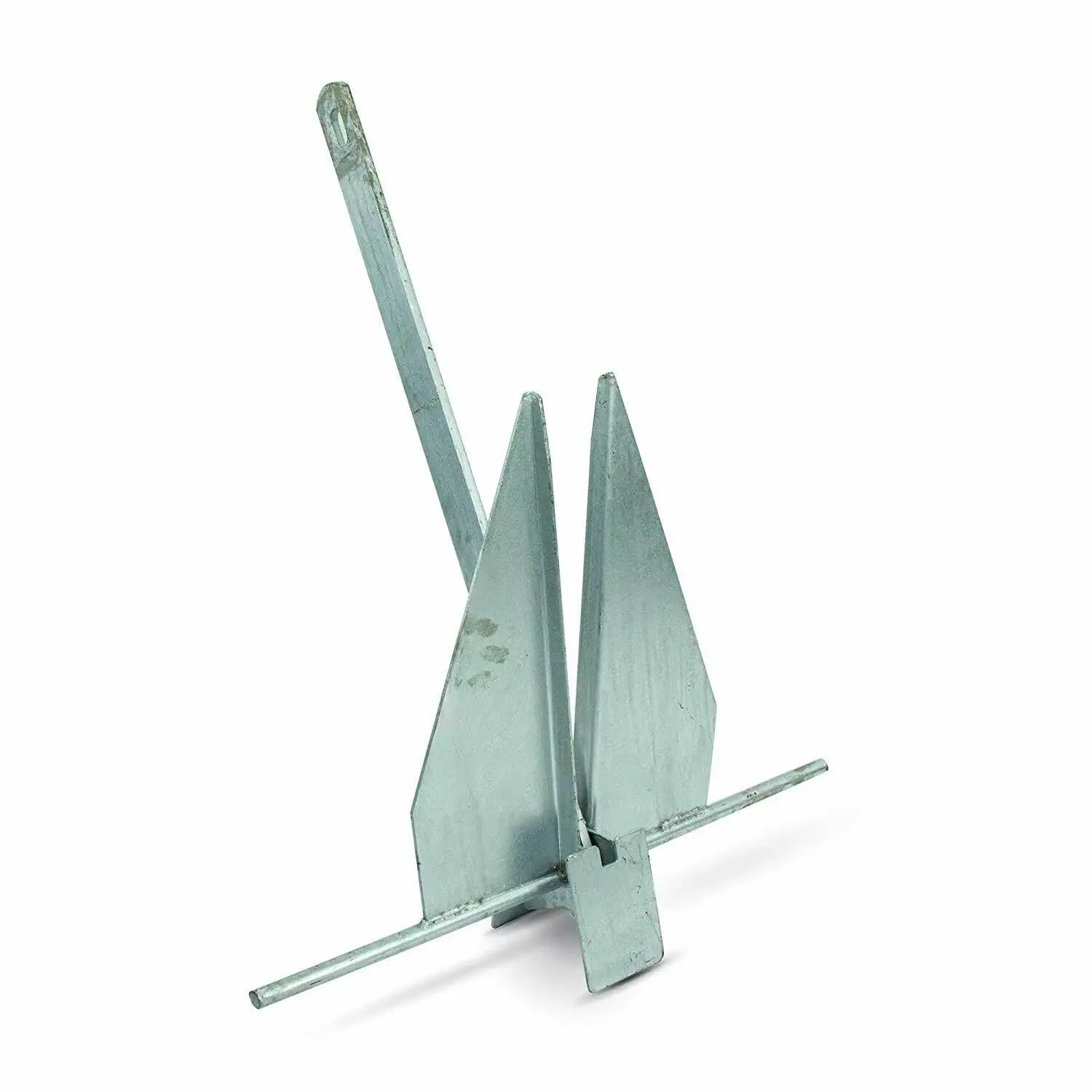The Only Guide to Fluke Style Anchor
Wiki Article
Getting The Fluke Style Anchor To Work
Table of ContentsThe Facts About Fluke Style Anchor RevealedFluke Style Anchor for BeginnersThe Facts About Fluke Style Anchor RevealedGet This Report about Fluke Style Anchor
Claw anchors are easier to establish, much less likely to foul, and simpler to reset if they drag. They do not supply as much holding power as a fluke-style support. Plow-style supports are the most typical type of support used on tiny to medium-sized watercrafts. They are simple to release and also retrieve and also supply good holding power in a lot of conditions.They are much more efficient at embeding in soft bottoms, and they have a higher holding power-to-weight proportion. Mushroom anchors are the largest and heaviest sort of support, and they are usually used on large watercrafts or in deep water. They have the highest possible holding power of any type of type of anchor, but they can be testing to release as well as fetch.
Fluke supports are generally made of high-grade materials such as galvanized steel as well as are construct to last. Fluke support dragging can be an aggravating trouble for boaters.
This tool attaches to the support line and stops it from turning. An additional alternative is to make use of a longer support line.
The Of Fluke Style Anchor
Examine the anchor itself to see if it is damaged or if the flukes are not dug in appropriately. If so, try resetting the support. Last but not least, if all else falls short, you can attempt moving the watercraft to a various area.This layout permits for an appropriate setup no issue the angle the support lands. When selecting your next anchor see us here at Wholesale Marine.
By Tom Burden, Last updated: 5/28/2020 Support rodes are composed of a length of chain, rope or a combination of rope and also chain that connects a support to a boat. The rope section of support rodes normally includes nylon three-strand, 12-strand or double-braid line. Nylon is the material of selection, because it is flexible and able to absorb the shock tons encountered when securing - Fluke Style Anchor.
Lots of little watercrafts make use of support rodes made totally of three-strand nylon line. This is since all-rope rodes are light-weight, cost-effective and easier to store than rope-chain or all-chain rodes. All-rope rodes can be fairly solid, they lack the chafe resistance of chain and are for that reason not ideal for securing near coral, among rocks or in anchorages with lots of rise and wave activity.
Rumored Buzz on Fluke Style Anchor

This decreases the need for long scope (except in superficial water) since the chain is heavy and rests on all-time low up until serious conditions are encountered, when more scope may be needed. Considering that chain has very little elasticity, treatment ought to be taken to avoid the chain from ending up being "bar limited" in high winds by utilizing a snubber made from nylon line.
It is reasonably light (as low as 65 lb.) and tremendously More about the author strong. Grade 43, called G4 or HT; made from high-carbon steel. G4 is the favored chain for anchoring or windlass applications, and also has twice the workload of BBB chain, so you can use a smaller sized size with the same strength.
BBB or "Three-way B" has a consistent pitch short link, and also functions well on windlass gypsies. BBB used to be one of the most prominent kind for windlass layouts of the past, however has actually been changed by G4. Evidence Coil does not have an uniform pitch as well as does not deal with anchor windlasses.
Excitement About Fluke Style Anchor
Little galvanized irons connect the anchor to the length of browse this site chain, as well as affix the chain to the thimble on the support line. Fluke Style Anchor. Bear in mind to make use of the "following dimension up" in try this out irons; a size of 1/4" chain would be matched to a 5/16" bind. This system, with a lengthy size of three-strand nylon line, a moderate size of chain as well as a properly sized support will certainly satisfy the demands of most of sailors, with boats up to the 30' dimension variety.
High-strength chain like these allows you to decrease a dimension which lowers the chain's weight by concerning 30%, while accomplishing the same workload ability as well as ultimate stamina. Matching support chain to a details vessel can be difficult, because the windage of the vessel is probably the crucial option aspect, and windage is tough to figure out.
Report this wiki page